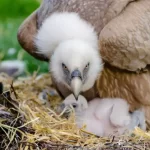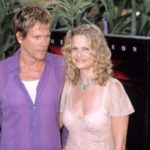Perfectly Preserved Dinosaur Embryo Found Inside Fossilized Egg
The post Perfectly Preserved Dinosaur Embryo Found Inside Fossilized Egg appeared first on Healthy Holistic Living.
In a dimly lit corner of a museum’s storage room in China, a discovery waited silently, holding within its age-old shell a story from a time when giants roamed the Earth. This tale begins with the uncovering of an exquisitely preserved dinosaur embryo, cradled inside its fossilized egg for millions of years. Known as Baby Yingliang, this rare find from the Cretaceous period (approximately 66 to 72 million years ago) offers a unique glimpse into the life of the oviraptorosaurs, a group of feathered dinosaurs that walked the earth long before the dawn of mankind. The discovery of Baby Yingliang is not just about the remarkable preservation of a moment frozen in time; it’s a window into the evolutionary ballet that connected the ancient inhabitants of our planet to the avian descendants we share our world with today.
The embryo, measuring about 27 centimeters (10.6 inches) in length, was found adopting a posture strikingly similar to that of modern bird embryos just before hatching. This pose, known as tucking, involves the curving of the body and the nesting of the head under the wing, a critical behavior for the survival of a bird’s escape from the egg. Such a find challenges our understanding and offers compelling evidence of the deep-rooted connections between the dinosaurs of old and the birds that grace our skies today. As we stand on the threshold of this incredible discovery, let us delve deeper into the mysteries of the past, uncovering the secrets that Baby Yingliang holds and what it tells us about the ancient world and our place within its vast, interconnected history.
The Discovery of Baby Yingliang
The story of Baby Yingliang’s discovery reads like a novel, where serendipity meets the relentless pursuit of knowledge. For years, a fossilized egg lay hidden in plain sight within the storerooms of a museum in China, its significance unrecognized. It was among countless other relics from a bygone era, collecting dust, waiting for its moment in the spotlight. This egg, however, was not just another stone among the rubble. Encased within was a perfectly preserved dinosaur embryo, a treasure from the late Cretaceous period that would soon astound the scientific community and the world at large.
The embryo, belonging to the oviraptorosaurs, a lineage of feathered, toothless theropods, was found in a position that mirrored the posture of modern bird embryos shortly before they hatch. This posture, known as tucking, is critical for the successful hatching of birds, as it helps the embryo position itself for an easier exit from the egg. The discovery was groundbreaking because it provided the first evidence of such behavior in non-avian dinosaurs, offering a tangible link between the behaviors of ancient dinosaurs and their modern descendants. The significance of this find cannot be overstated. For over a decade, the egg sat untouched, its contents unknown, until researchers took a closer look and unveiled the embryo dubbed Baby Yingliang.
This moment of revelation not only highlights the importance of thorough investigation and the potential for discovery in overlooked places but also marks a pivotal point in our understanding of dinosaur behavior and evolution. As scientists meticulously studied Baby Yingliang, they began to piece together a narrative that spanned millions of years, connecting the dots between the ancient past and the present. This tiny, unborn dinosaur, frozen in time, became a messenger from the past, providing clues about the evolutionary journey that led from the majestic creatures that once dominated our planet to the birds that now fly across our skies. The discovery of Baby Yingliang is a testament to the enduring power of curiosity and the endless quest for knowledge.
Unraveling the Mystery: The Significance of Tucking
The posture Baby Yingliang was found in, known as tucking, is more than just a fetal position; it is a behavior that bridges the vast expanse of time, connecting the ancient world of dinosaurs with the avian species we are familiar with today. Tucking is observed in modern birds as a critical part of the hatching process. It allows the embryo to position itself for the best possible emergence from the egg. Birds that fail to adopt this posture are significantly less likely to survive the hatching process. This behavior’s discovery in a dinosaur embryo suggests that such adaptive behaviors have deep evolutionary roots, stretching back to the age of dinosaurs.
This remarkable find has prompted scientists to reconsider the evolutionary timeline of avian behaviors, pushing back the origins of what were thought to be uniquely avian characteristics to a time when the earth was ruled by dinosaurs. Baby Yingliang’s posture in the egg provides compelling evidence that the origins of tucking, and possibly other avian behaviors, can be traced back to their theropod ancestors. This challenges previously held notions and opens up new avenues for research into the evolutionary history of birds and their dinosaur predecessors.
The implications of this discovery extend beyond the scientific community, captivating the imagination of people around the world. It serves as a poignant reminder of the interconnectedness of life on Earth, showing that behaviors we associate with the birds chirping in our backyards have ancient origins, deeply rooted in the natural history of our planet. Baby Yingliang, therefore, is not just a fossil; it is a key that unlocks secrets of evolutionary biology, offering insights into the continuity of life through millions of years.
Bridging the Gap: From Dinosaurs to Birds
The discovery of Baby Yingliang not only illuminates the behavioral connections between ancient dinosaurs and modern birds but also underscores the physical and evolutionary transformations that have occurred over millions of years. This transition from dinosaurs to birds is one of the most fascinating narratives in the history of life on Earth, showcasing the incredible adaptability and resilience of life.
The presence of feathers in oviraptorosaurs, the group to which Baby Yingliang belongs, serves as a striking example of the evolutionary link between dinosaurs and birds. Feathers, once thought to be exclusive to birds, have been discovered in various dinosaur species, indicating their role not just in flight but also in insulation, display, and possibly brooding behavior. This shared characteristic is a clear indication of the common ancestry between these two groups, highlighting the gradual transformations that have shaped the course of evolutionary history.
Moreover, the study of Baby Yingliang and similar fossils has shed light on the developmental processes of dinosaurs, offering insights into how their reproductive behaviors have influenced the survival and evolution of their avian descendants. The intricate details preserved in fossils like Baby Yingliang allow scientists to reconstruct the life cycles of dinosaurs, from embryonic development to adulthood, drawing parallels with the developmental stages of birds.
This continuity from dinosaurs to birds illustrates the complexity of evolutionary pathways, demonstrating how traits evolve over time to adapt to changing environments and survival needs. It’s a testament to the dynamic nature of life on Earth, where even the smallest adaptations can have profound impacts on the trajectory of evolution. Baby Yingliang stands as a symbol of this enduring connection, bridging the vast expanse between the ancient and the modern, and reminding us of the shared history that binds all life on our planet.
The Role of Fossil Discoveries in Modern Science
Fossil discoveries like that of Baby Yingliang play a pivotal role in modern scientific research, offering invaluable insights into the past that help us understand the present and predict the future. Each fossil is a piece of the puzzle in the vast and intricate history of life on Earth, providing evidence of the evolutionary processes that have shaped the world as we know it today.
Through the study of fossils, scientists can reconstruct ancient ecosystems, understand how climate change has impacted life through the ages, and trace the lineage of species to understand their development and adaptation over time. Fossils are not merely remnants of a bygone era; they are records of the dynamic history of our planet, chronicling the rise and fall of species, the shifting of continents, and the changing of climates.
Moreover, the discovery of well-preserved specimens like Baby Yingliang highlights the importance of paleontological research in filling the gaps in our knowledge about life’s history. Such discoveries challenge existing theories and often lead to new hypotheses about evolution, behavior, and the interactions of ancient organisms. They inspire a reevaluation of what we know about the natural world and push the boundaries of scientific inquiry further.
Fossils also play a crucial role in education and public engagement, sparking curiosity and wonder about the natural world. They provide tangible connections to the past, making abstract concepts of time and evolution more relatable and understandable. Museums, educational institutions, and research facilities around the world utilize fossils to teach about the diversity of life, the importance of conservation, and the need for scientific inquiry.
The Imperative of Ongoing Discovery
The revelation of Baby Yingliang magnifies the essential nature of continuous exploration in the realm of paleontology. This discipline not only peels back the layers of Earth’s ancient history but also casts a light on the evolutionary pathways that have led to the present diversity of life. With each fossil unearthed, a new chapter of knowledge opens, challenging our preconceptions and enriching our understanding of nature’s intricate dance through time.
Advancements in technology have revolutionized the way we study ancient remains, offering unprecedented insights into the lives of creatures that walked the Earth millions of years ago. Techniques like CT scanning have unveiled the inner workings of fossils in meticulous detail, propelling our comprehension of their biology and ecology forward. These scientific breakthroughs underscore the importance of persistent exploration, ensuring that the stories of the past continue to inform and inspire the future.
Furthermore, the pursuit of paleontological research holds a mirror to our own existence, reminding us of the fragility of life and the significance of conservation. As we delve deeper into the past, we gain valuable perspectives on how to navigate the challenges of the present and future, particularly in relation to environmental stewardship. The journey of discovery is far from over, and the legacy of Baby Yingliang is a testament to the boundless possibilities that await us in the uncharted territories of our planet’s history.
Unearthing the Lessons of the Past
As we reflect on the journey from the discovery of Baby Yingliang to the broader implications of fossil research, several key lessons emerge that not only illuminate our understanding of the natural world but also guide us towards a more informed and conscientious future:
The Continuity of Life: Baby Yingliang’s discovery highlights the deep evolutionary connections between the dinosaurs of the past and the birds of today, reminding us of the enduring legacy of life on Earth.
The Power of Curiosity: This remarkable find underscores the importance of scientific inquiry and the role of curiosity in driving discoveries that challenge and expand our understanding of the natural world.
The Importance of Preservation: Fossils like Baby Yingliang serve as a poignant reminder of the fragility of life and the critical need for conservation efforts to protect our planet’s biodiversity for future generations.
The Value of Education: By bringing the past to life, fossils play a crucial role in education, sparking curiosity and fostering a deeper appreciation for the history of our planet among people of all ages.
The Need for Continued Exploration: The discovery of Baby Yingliang reinforces the importance of ongoing research and exploration in uncovering the secrets of our planet’s past, informing our present, and guiding our future.
In conclusion, the story of Baby Yingliang is a testament to the power of discovery and the profound connections between the past, present, and future. As we continue to explore the mysteries of the natural world, let us carry forward the lessons learned from our ancient predecessors, embracing curiosity, championing conservation, and nurturing a deep appreciation for the intricate tapestry of life that connects us all.
The post Perfectly Preserved Dinosaur Embryo Found Inside Fossilized Egg appeared first on Healthy Holistic Living.












